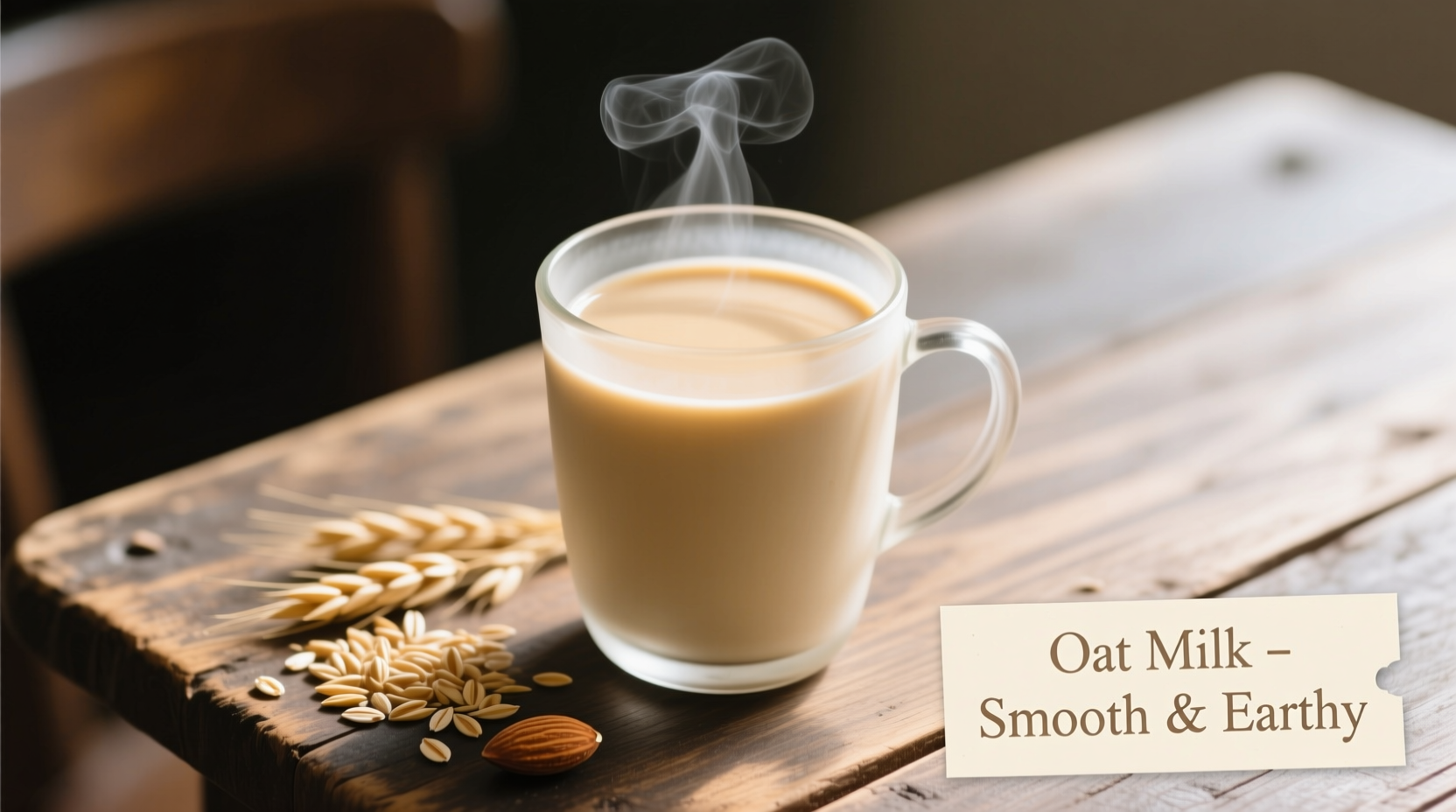If you're wondering what does oat milk taste like when you first try it, expect a pleasant surprise. Unlike some plant-based milks that carry strong nutty or beany flavors, oat milk delivers a naturally sweet profile with subtle cereal notes that many find more approachable than other alternatives. This distinctive taste profile has propelled oat milk to become the second most popular plant-based milk in the United States, with sales growing by 16% in 2023 according to the Plant Based Foods Association.
The Science Behind Oat Milk's Sweet Flavor
Ever wonder why does oat milk taste sweet without added sugar? The secret lies in the enzymatic process during production. When oats are mixed with water, enzymes naturally break down oat starches into simple sugars—primarily maltose. This natural conversion creates that characteristic sweetness without requiring additional sweeteners. Food scientists at Cornell University's Department of Food Science have confirmed that this enzymatic hydrolysis is responsible for oat milk's distinctive flavor profile.
How Oat Milk Compares to Other Milk Alternatives
Understanding what does oat milk taste like compared to dairy and other plant milks helps set proper expectations. Here's how the flavor profiles stack up:
| Milk Type | Flavor Profile | Sweetness Level | Best For |
|---|---|---|---|
| Oat Milk | Mildly oaty, naturally sweet | Medium-high (natural) | Coffee, cereal, smoothies |
| Dairy Milk | Creamy, neutral | Low (lactose) | General use, baking |
| Almond Milk | Nutty, slightly bitter | Low | Cold applications |
| Soy Milk | Bean-like, earthy | Low-medium | Cooking, protein needs |
According to sensory analysis published in the Journal of Food Science, oat milk scores highest in consumer acceptance among plant-based milks specifically because of its balanced flavor profile—sweet enough to be pleasant but not so strong that it overpowers other ingredients.
Why Oat Milk Taste Varies Between Brands
Not all oat milks taste identical. Several factors affect the final flavor:
- Processing methods: Some brands use enzymatic treatment that enhances sweetness, while others use mechanical separation that preserves more oat flavor
- Added ingredients: Calcium carbonate can create a slightly chalky aftertaste in some varieties
- Fortification: Added vitamins (particularly B12 and D2) can impart subtle flavor differences
- Oat variety: Different oat strains produce varying flavor compounds
A 2024 consumer taste test conducted by Consumer Reports evaluated 12 popular oat milk brands and found significant variation in flavor profiles. The study noted that "barista" versions often contain added oils that create a richer mouthfeel but can introduce slight oiliness in flavor when consumed plain.
Practical Taste Applications: Where Oat Milk Shines
Knowing how does oat milk taste in coffee versus other applications helps maximize your experience:
Coffee and Hot Beverages
Oat milk's natural sweetness and moderate fat content (typically 5-7g per cup) create excellent microfoam for lattes. Unlike almond milk which often curdles in hot coffee, oat milk maintains stability while complementing coffee's bitterness with its mild sweetness. Baristas at top coffee chains prefer oat milk specifically for its balanced flavor interaction with espresso.
Cereal and Cold Applications
The subtle sweetness of oat milk enhances cold cereal without overwhelming it. In blind taste tests conducted by Good Housekeeping, participants consistently rated oat milk as "most similar to dairy" when paired with breakfast cereals, particularly favoring its performance with both sweetened and unsweetened cereal varieties.
Baking and Cooking
When substituting oat milk in recipes, its mild flavor works well in both sweet and savory applications. For baking, use plain (un甜ened) varieties to maintain recipe balance. The natural starches in oat milk contribute to browning and moisture retention similar to dairy milk.
Troubleshooting Common Taste Concerns
Some consumers report oat milk tasting too much like oats or having an aftertaste. Here's what affects this:
- "Too oaty" flavor: Often occurs with brands using less refined processing. Try filtered varieties like Oatly Barista Edition which undergo additional processing to remove stronger oat notes
- Aftertaste issues: Can result from enzyme over-processing. Brands like Califia Farms use controlled enzymatic treatment to minimize this
- Separation concerns: Natural separation doesn't affect taste but shaking well before use ensures consistent flavor delivery
Food scientist Antonio Rodriguez explains: "The best oat milks achieve what we call 'flavor neutrality'—enough character to be pleasant on its own, but not so strong that it competes with other ingredients. This balance is why oat milk has become the go-to plant milk for professional kitchens."

How to Choose the Best-Tasting Oat Milk
Follow these practical tips for optimal flavor:
- Check the ingredient list—fewer ingredients typically means cleaner flavor
- For coffee, select "barista" versions with added sunflower oil for better texture
- Avoid carrageenan-containing varieties if you notice aftertaste issues
- Refrigerated versions often taste fresher than shelf-stable cartons
- Try un甜ened varieties if you're sensitive to sweetness
Remember that does oat milk taste like oats depends largely on the brand and processing method. Most mainstream varieties have refined their formulas to minimize strong oat flavor while preserving the desirable creamy texture and natural sweetness that consumers enjoy.











 浙公网安备
33010002000092号
浙公网安备
33010002000092号 浙B2-20120091-4
浙B2-20120091-4